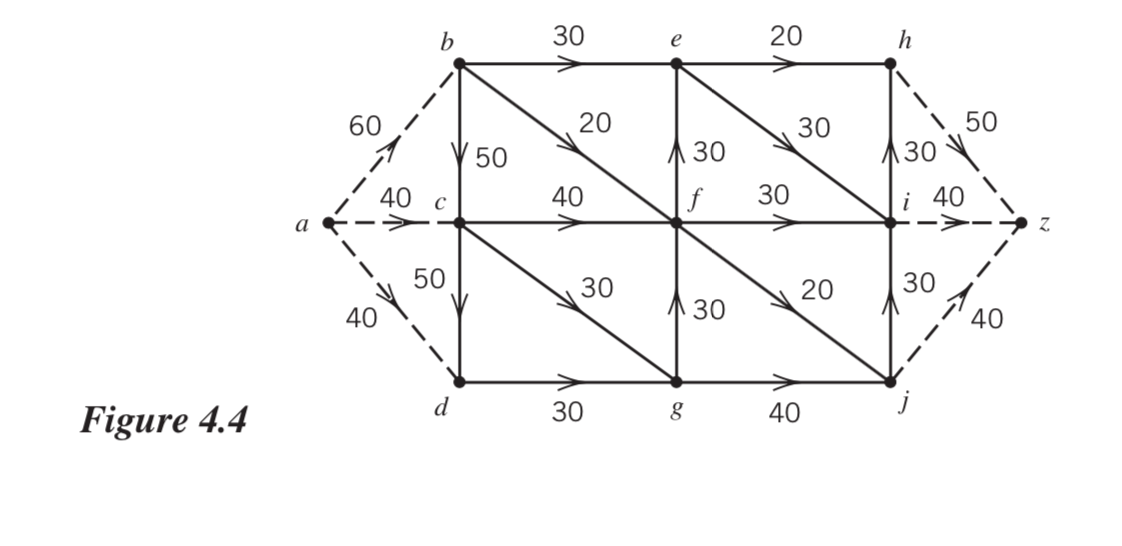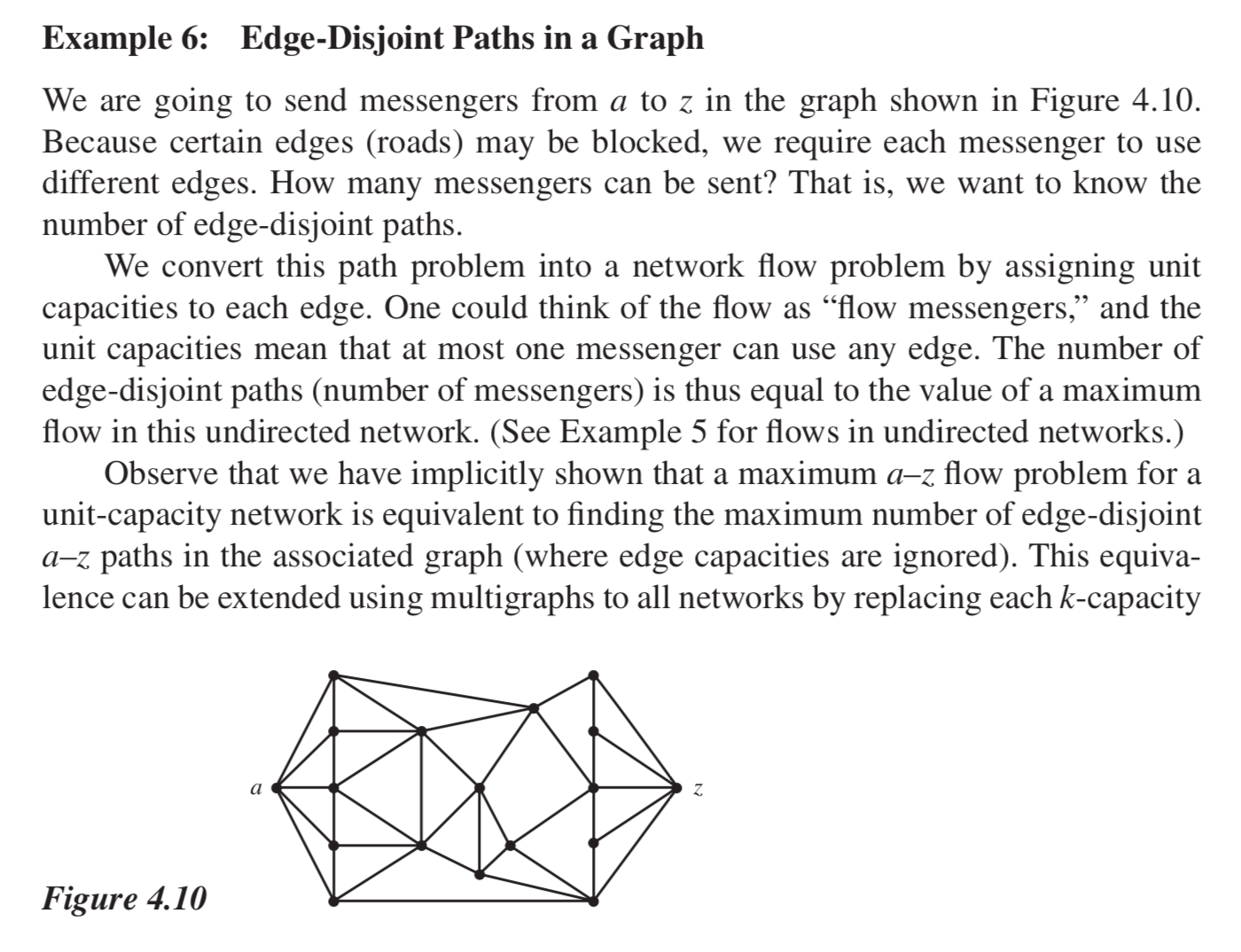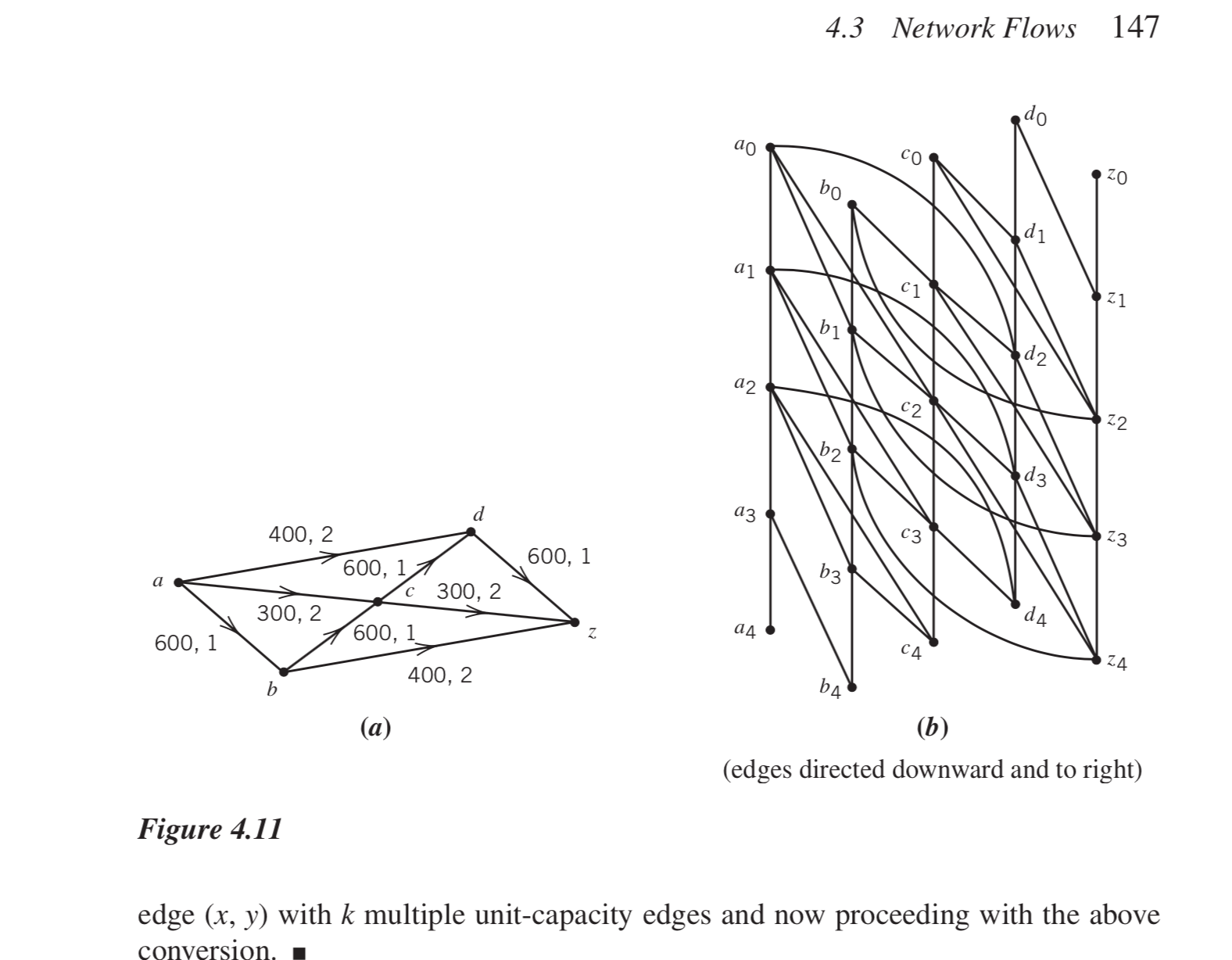Answered step by step
Verified Expert Solution
Question
1 Approved Answer
Questions 6, 8 and 9. 6.Is there a flow meeting the demands in Figure 4.4? 8.Vertices b, c, d have supplies 30, 20, 10, respectively,
Questions 6, 8 and 9.
6.Is there a flow meeting the demands in Figure 4.4?
8.Vertices b, c, d have supplies 30, 20, 10, respectively, and vertices j, k have demands of 30 and 25 in this network.
9.Solve the messenger problem in Example 6.




Step by Step Solution
There are 3 Steps involved in it
Step: 1

Get Instant Access to Expert-Tailored Solutions
See step-by-step solutions with expert insights and AI powered tools for academic success
Step: 2

Step: 3

Ace Your Homework with AI
Get the answers you need in no time with our AI-driven, step-by-step assistance
Get Started


